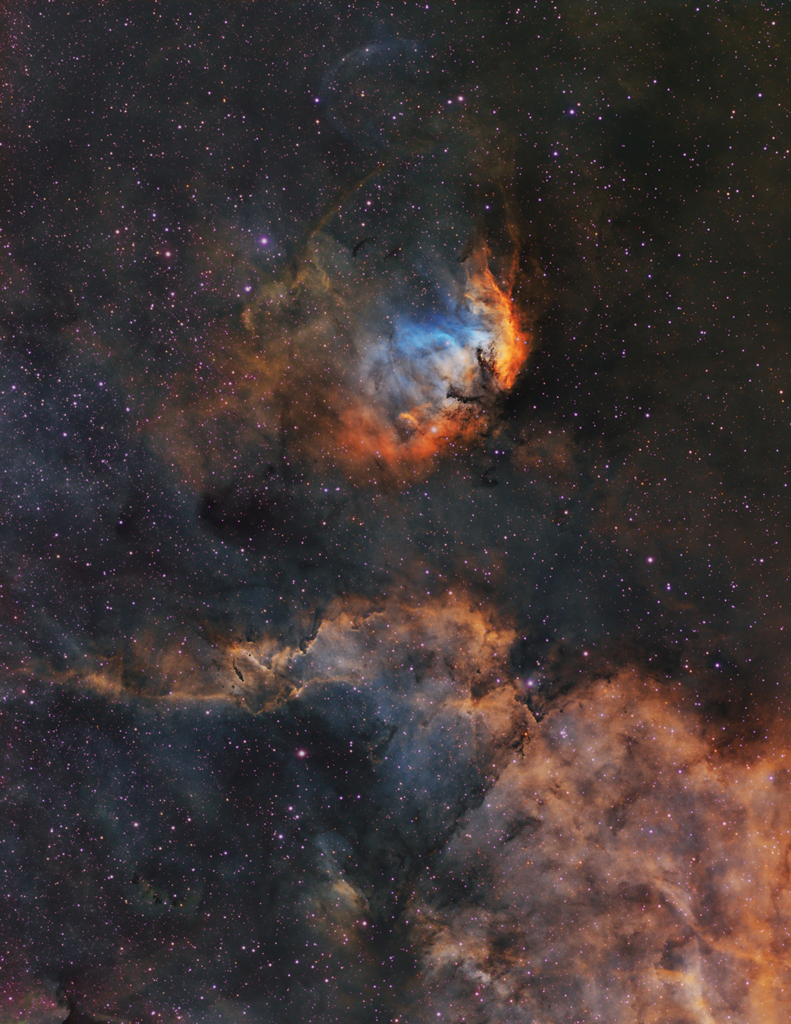郁金香和天鹅座X-1
(原标题: The Tulip and Cygnus X-1)
2021-07-29
浏览次数: 151
这张高望远镜的视野沿着我们银河系的平面向星云丰富的天鹅座望去。通常被称为郁金香星云,中心上方最明亮的发光星际气体和尘埃云也被天文学家斯图尔特·夏普勒斯在1959年的星表中发现,编号为Sh2-101。近70光年远的复杂而美丽的郁金香星云在8000光年远的地方绽放,在哈勃调色板图像中显示,星云的硫、氢和氧离子的辉光被绘制成红色、绿色和蓝色。来自天鹅座OB3星群边缘的年轻高能恒星的紫外线辐射,包括O星HDE 227018,电离了原子,并为郁金香星云的发射提供了动力。在视野中还有微类星体天鹅座X-1,它是地球天空中最强的x射线源之一。在黑洞吸积盘强大的喷流的驱动下,它暗淡的蓝色弯曲激波锋面只能勉强看到,就在宇宙郁金香花瓣的正上方,靠近画面的顶部。
查看原文解释
This tall telescopic field of view looks out along the plane of our Milky Way Galaxy toward the nebula rich constellation Cygnus the Swan. Popularly called the Tulip Nebula, the brightest glowing cloud of interstellar gas and dust above center is also found in the 1959 catalog by astronomer Stewart Sharpless as Sh2-101. Nearly 70 light-years across the complex and beautiful Tulip Nebula blossoms about 8,000 light-years away, shown in a Hubble palette image that maps the glow of the nebula's sulfur, hydrogen, and oxygen ions into red, green, and blue colors. Ultraviolet radiation from young energetic stars at the edge of the Cygnus OB3 association, including O star HDE 227018, ionizes the atoms and powers the emission from the Tulip Nebula. Also in the field of view is microquasar Cygnus X-1, one of the strongest X-ray sources in planet Earth's sky. Driven by powerful jets from a black hole accretion disk, its fainter bluish curved shock front is only just visible though, directly above the cosmic Tulip's petals near the top of the frame.
© Carlos Uriarte
